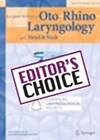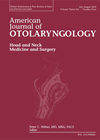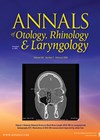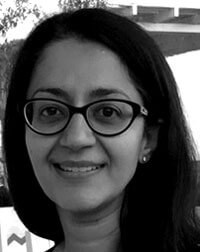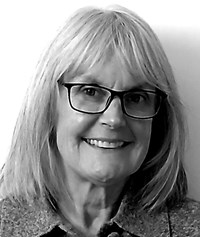
Journal Reviews
IIb nodes in a node-negative neck
This is an 11-year retrospective study of 389 patients who underwent 527 supraomohyoid neck dissections in a clinically node-negative (cN0) neck between November 2012 and November 2023. Oropharyngeal, maxillary, gingival and maxillary sinus tumours, along with those with a location...
Hot off the press: new clinically relevant research methodologies for speech and language therapy
Interpretive Description (ID) is a qualitative research framework developed to address the limitations in other qualitative methods that are not epistemologically able to take applied fields, such as clinical professions, into consideration. This framework, often described as a method, has...
Navigate me there, to my new CAT
Transcanal endoscopic ear surgery (TEES) has gained momentum with its close-up high definition wide-angled views. Skeptics point out single-handed operating in a 2D view. The authors made use of navigation and augmented reality (AR) to present an additional minimal access...
In the United States, do people with dysphagia have a higher chance of being dysphonic?
Dysphagia and dysphonia can co-occur due to their shared anatomy and physiology. Previous studies have considered this relationship and determined that certain conditions, such as cancer, laryngeal impairments or neurological disorders, may lead to problems with both swallowing and voice....
Canal cholesteatoma
This is a retrospective study of patients with external auditory canal cholesteatoma (EACC) managed at a single tertiary centre from 1 January 2010 to 1 January 2021. Ninety patients (100 ears) were included. Mean age at diagnosis was 56+23 years....
Budesonide nasal irrigation for chronic rhinosinusitis: is it effective and safe?
Budesonide respules used in nasal irrigations as part of chronic rhinosinusitis management are usually at a dose of 0.25 mg to 2 mg, which is substantially higher compared to budesonide nasal spray, typically ranging from 64 to 256 micrograms. Hence,...
Swallowing their words: translating and adapting swallowing questionnaires to other languages
Dysphagia (swallowing difficulties) is increasingly relevant given the ageing population. Yet measuring or assessing dysphagia is challenging and often costly when exploring instrumental examination. The aim of this study was to translate and validate a patient-reported swallow questionnaire; the Sydney...
Management of post-tonsillectomy bleeding with nebulised TXA
In the last 20 years, rates of adult tonsillectomy have fallen in the order of 50%. The flipside to this, is that the number of admissions of patients with acute tonsilitis is more than double the reduction in tonsillectomy rates....
Bell’s palsy – antivirals and steroids for all?
The role of antiviral medications in the treatment of Bell’s palsy remains somewhat controversial. Antivirals alone do not appear to be helpful, whereas numerous studies have shown that corticosteroids improve the chance of a full recovery compared to placebo. What...
Posterior nasal neurectomy – long-term data shows tailing off of benefits but still improvement after three years
It is well understood that allergic rhinitis has a very detrimental effect on quality of life for afflicted patients. This study looks at patients with allergic rhinitis but no other associated sinonasal or respiratory diagnoses. Patients with a history of...
Congenitally anosmic patients do have fewer olfactory foramina
It has been previously established that patients with Kallman’s syndrome (very much associated with anosmia) have a similar number of cribriform plate foramina when compared to controls. As non-invasive CT assessment of the cribriform plate is now possible in cadavers,...
Hear me out – tiny steroid implants for fighting meningitis-induced deafness
Sensorineural hearing loss is the most common neurological complication of pneumococcal meningitis. Bacterial infiltration into the inner ear triggers inflammation, leading to cochlear fibrosis and sclerosis – damage that, in over a third of cases, affects both ears. Current Infectious...








